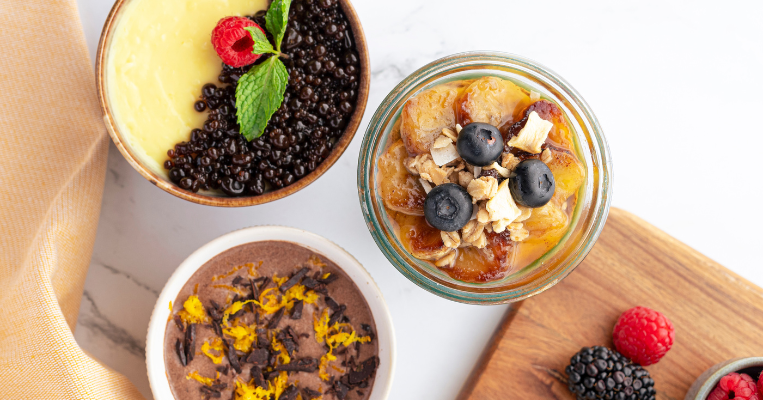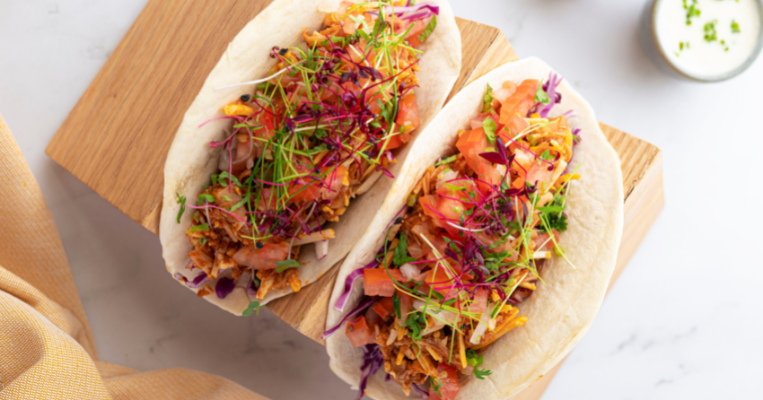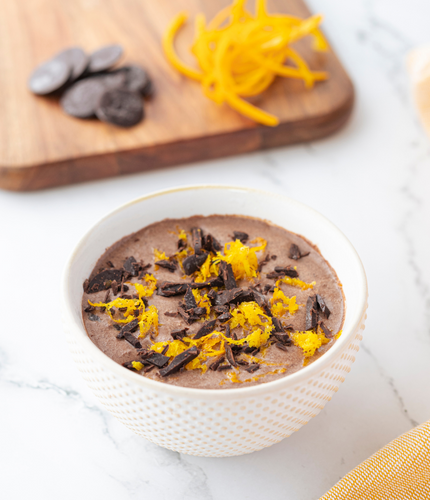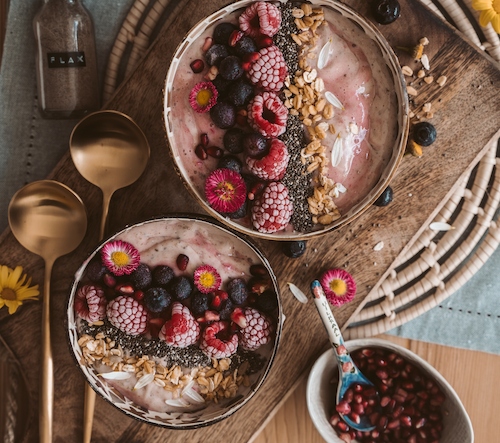
11 January 2023
Balance Your Diet: Micros Edition
I recently published a blog on the concept of macronutrients and the importance of achieving the right balance of protein, carbohydrates and fats in your diet. Since then, I have been thinking a lot about the other elements that make up a healthy, balanced diet, and I decided that this topic deserved a part two! So, in today’s blog, I am exploring the lesser-known nutrient group, micronutrients.
What Are Micros?
Micros, or micronutrients, are the essential vitamins and minerals that our bodies need but don’t make naturally. They are vital for a wide variety of bodily functions including growth, immune function, brain development, and even preventing and fighting disease. We only need these nutrients in very small amounts, hence the name ‘micronutrients’!
Micros are especially important if you’re following a vegan or plant-based diet, because many of the well-known sources of these nutrients are meat, fish and dairy. However, it is entirely possible to get all of the vital micronutrients your body needs whilst following a healthy, balanced, plant-based diet. In this blog, I will run through five of the most important micronutrients, why our bodies need them, and some of my favourite vegan-friendly foods that contain them.
Iron
One of the most important micronutrients, iron supports natural growth and development. Your body uses iron to make haemoglobin, the protein found in red blood cells that carries oxygen around the body from the lungs, and myoglobin, the protein that provides oxygen to your muscles. Your body also requires iron to make many of the hormones it makes naturally.
Some of my favourite sources of iron are lentils, beans, tofu, dark chocolate and dried apricots – or, you can boost your daily requirement with iron tablets.
Vitamin B12
Vitamin B-12 (also known as cobalamin) is essential for bone health, red blood cell formation, nerve function and the production of DNA. It is also closely associated with mood regulation and energy levels.
One of my favourite sources of B12 is marmite, but I also take an IV drip twice a month to top up on B12. If you don’t want to take B12 via IV, or there is nowhere close to you that offers the service, you can also find B12 tablets at most pharmacies or health food stores.

Zinc
An important ingredient in the recipe for DNA, zinc is also vital for building proteins, healing damaged tissue and supporting a healthy immune system. It is particularly important during periods of growth, such as childhood and pregnancy, as it helps cells to multiply and grow.
Some of my favourite sources of zinc are quinoa, chickpeas, beans, hemp seeds and pumpkin seeds.
Is That All?
While these five nutrients are widely considered the most important, there are actually 20 vitamins and minerals that your body needs to function properly. Scroll to the bottom of this blog for the full list, with sources and recommended daily allowances (RDAs).
Contemplating the micronutrients in your diet can feel quite daunting, but don’t worry! The chances are, your diet is probably already rich in most of the nutrients your body needs. The best way to find out is to monitor your food intake through a diet-tracking app like MyFitnessPal, Cronometer or MyMacros+. This way, you can see if you’re already hitting your RDAs and, if you’re not, you can make some adjustments to ensure you are (such as taking supplements or adding a new ingredient to your usual breakfast, lunch or dinner).

Vitamin D
Vitamin D helps your body to absorb and retain calcium and phosphate – nutrients which are needed to keep bones, teeth and muscles healthy. Vitamin D deficiency is associated with bone deformities, pain and chronic inflammation, so it is important to keep up your intake.
Some of my favourite sources of vitamin D are portobello mushrooms, oyster mushrooms, almond milk and lots of sunshine!
Omega 3
Omega 3 fatty acids are linked to many health benefits, including reducing symptoms of depression and anxiety, improving eye health, improving risk factors of heart disease and reducing inflammation. They have been shown to help prevent heart disease, strokes, cancer, and may even control lupus, eczema and rheumatoid arthritis.
Some of my favourite sources of omega 3 are algae, seaweed, flax seeds and spirulina.

A Micro-Nutrient Booster
My favourite way to give my body a boost of micronutrients is by making this nutrient-rich smoothie once a week. All I do is drop the following five ingredients into a blender, blend until smooth, and then enjoy!
- Hemp protein
- Spirulina powder
- Flax seeds
- Frozen banana
- Almond milk
Want to know more about balancing your vegan diet? Read my first blog in the ‘Balancing Your Diet’ series, which focused on macronutrients, here.
______
Full Micronutrient List
| Nutrient | Vegan Sources | RDA |
| Vitamins | ||
| A | Sweet potatoes, carrots, spinach | 700-900 mcg |
| B1 | Whole grains | 1.1-1.2 mg |
| B2 | Nutritional yeast, mushrooms, mange-tout | 1.1-1.3 mg |
| B3 | Leafy greens, beans | 14-16 mg |
| B5 | Mushrooms, avocado | 5 mg |
| B6 | Carrots, potatos | 1.3 mg |
| B7 | Almonds, spinach, sweet potatos | 30 mcg |
| B9 | Black-eyes peas, spinach, asparagus | 400 mcg |
| B12 | Nutritional yeast, fortified soy or cereals, tempeh | 2.4 mcg |
| C | Citrus fruits, bell peppers, brussell sprouts | 75-90 mg |
| D | Sunlight | 600–800 IU |
| E | Sunflower seeds, wheat germ, almonds | 15 mg |
| K | Leafy greens, soybeans, pumpkin | 90-120 mcg |
| Minerals | ||
| Calcium | Leafy greens, broccoli | 2,000–2,500 mg |
| Phosphorus | Nuts, lentils, chickpeas | 700 mg |
| Magnesium | Almonds, cashews, black beans | 310–420 mg |
| Sodium | Salt, processed foods, canned soup | 2,300 mg |
| Chloride | Seaweed, salt, celery | 1,800–2,300 mg |
| Potassium | Lentils, acorn squash, bananas | 4,700 mg |
| Sulfur | Garlic, onions, Brussels sprouts, mineral water | None established |






















